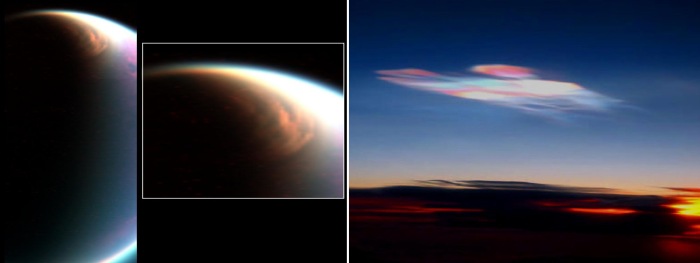I have recently been approached for some comments by Sarah Wells, who was writing a news article about aliens for Live Science (article can be found here https://www.livescience.com/space/extraterrestrial-life/what-could-aliens-look-like)
When asked to imagine an alien, straight after green glowing bipeds with dragonfly eyes, a rather different specie comes to my mind – a fungi.
Knowing that other planets have far less friendly climates—lacking an atmosphere to protect against UV radiation, and to keep the surface water and warmth—suggests that living on the surface of such planets would not be as comfortable. On the other hand [or rather under one’s foot], soils also provide protection against UV, can retain water and nutrients. The water retention capacity of soil is proportional to the surface area of the particles it is made of. Here, the presence of clay minerals (which are the smallest soil particles with the largest surface area) is of particular significance. Not only can clays retain water, but their formation is also evidence of water. This is what makes clay-rich areas a key interest for the Martian missions.
In fact, even on Earth, which offers a comfortable surface living, nearly 60% of all species are found in soils, which makes it the most biodiverse habitat [Anthony et al., Enumerating soil biodiversity, PNAS (2023)].
Yet, the species living in the soils can no longer use the same biomechanics as us [or the imaginary green aliens]. Let’s have a look at a few structures of life forms found on Earth and their prevalence in soils:
- Bacteria: typically single-cell, understood to be within the first of life forms, and known for its resilience. It was found that just over 1/2 of all its species live in soils.
- Archaea: a domain of single cells and another one of the first life forms that split away from bacteria at the point of LUCA (Last Common Universal Ancestor) 3800 MYA. Nevertheless, only under a 1/4 of all its species are subterranean.
- Plantae: easily recognised by their green colour on the top and roots in the soil, they make a good candidate for the soil-living species. Yet, plants are powered by photosynthesis, which requires sunlight, i.e., they cannot be fully underground for the whole duration of their life unless an alternative route to an energy source is found (e.g., parasitic plants). Plants originate from algal scum and appeared on land by about 700 MYA.
- Oligochaeta: the worms. These species predominantly live in soils (60%) or are semiaquatic; preferring wet, colder organic-rich soils. Enchytraeidae is a family of these worms that predominantly (98%) live in the soils. Their soft bodies mean that their fossils are rare featuring just parts of their bodies. Their emergence on Earth may be as early as 550 MYA, while their evolution is correlated with the emergence of the flowering plants about 65 MYA.
- Fungi: AKA mushrooms (which we may or may not eat). Actually, mushrooms are just the ‘fruits’, while underneath lays complex interconnected mycelium threads that can spread across hundreds of miles and live for thousands of years. Fungi diverged from other forms of life as early as 1500 MYA, descending from MRCA (Most Recent Common Ancestor), but could even be as early as 2400 MYA [Bengtson et al., Fungus-like mycelial fossils in 2.4-billion-year-old vesicular basalt, Nat Ecol Evol (2017)] Importantly, 90% of all fungi (which comprise yeasts and molds also) live in the soils, while up to 30% of our soil is made of fungi.
If we now step back and imagine alien life that is beyond a single cell (e.g., first life forms of bacteria and archaea), fungi become a rather appealing candidate with a track record of living in the soil; with the ability to form a complex long-lived and evolving network of mycelium; and a remarkable adaptability to radiation [Deshevaya et al., Survival of microorganisms during two-year exposure in outer space near the ISS, Sci Rep (2024)] they may even be feeding through radiosynthesis (hypothesized metabolism of ionizing radiation, alike photosynthesis) [Zhdanova, et al., Ionizing radiation attracts soil fungi, Mycological research (2004)].




